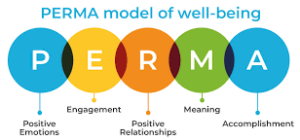
We are More Lonely than Ever. Find out Why and How to Counter It.
We are more connected and more lonely than ever. And this seems to be true across sex, age, race, and income. The COVID-19 pandemic has played a significant role in fostering disconnection among individuals, leading many of us to be less inclined to re-engage socially at the same level as before.
Loneliness doesn't typically travel alone, either. Research tells us that when we experience loneliness, we also experience depression and as we isolate more, we can develop anxiety, especially around social interactions.
Loneliness rarely manifests alone. It is often accompanied by depression, and prolonged isolation can give rise to anxiety, particularly in social interactions. Together they create a downward spiral that is difficult to stop without some form of intervention. Seeking therapy is an advisable course of action, especially when loneliness significantly impacts one's well-being or when depression or anxiety become prominent.
Just a reminder - Help is available in the USA right now using the National Suicide and Crisis Lifeline at 988 (SMS 988) in English and Spanish. For crisis numbers and websites for other countries, Google provides support information at https://support.google.com/websearch/answer/11181469.
 Why Do We Feel More Lonely than Ever?
Why Do We Feel More Lonely than Ever?
Loneliness is a subjective experience that varies for each individual, influenced by a multitude of factors. These can range from common contributors such as the COVID-19 pandemic to more personalized elements like our interpersonal relationships, engagement with social media, and support systems. Below, I will explore some of the most commonly cited reasons for loneliness. Additionally, I will provide some strategies or 'tips' to help you counter loneliness and address the accompanying mood and anxiety-related issues frequently associated with it.
Covid 19 and Social Isolation
The most apparent factor contributing to increased loneliness is the COVID-19 pandemic and the subsequent implementation of social distancing measures. Huxhold and Tesch-Römer (2023), in their review of research on the impact of COVID-19 on loneliness and related mental health issues, reveal that loneliness, particularly among individuals aged 40-90, had remained relatively consistent in prior years.
However, the loneliness rate within this age group experienced a staggering 150% surge during the first year of the pandemic. To maintain connections, we became increasingly reliant on technology, which older generations may have less familiarity with. While close relationships did not entirely alleviate the loneliness associated with the initial year of the pandemic, meaningful connections with neighbors offered a modest yet perceptible degree of relief. Even simple gestures such as waving over the fence helped foster a sense of normalcy and connectedness, albeit at a distance.
 Social Media and Modern Communications
Social Media and Modern Communications
Social media platforms and digital communication have connected individuals on a global scale. The American Psychological Association (APA, 2023a-d - see reference section for links) and numerous other sources emphasize the positive role of technology and modern media in facilitating connections and expanding our knowledge of both ourselves and the world. They argue that social media itself is not inherently detrimental, and its impact largely depends on how it is utilized.
But social media can also be tricky too - ensnaring us in a downward spiral of posts that reinforce our feelings of loneliness and amplify negative or unhelpful thoughts. Comparing our lives to carefully curated highlight reels on social media can exacerbate feelings of inadequacy and loneliness. While online interactions may provide some assistance, they often lack the depth and intimacy of face-to-face connections, further contributing to a sense of disconnection and isolation, even in the presence of virtual interactions.
For more information on countering the algorithms embedded in social media platforms, refer to my previous articles on "Doomscrolling" and "Social Media Pathology." The latter includes four healthy social media habits that can mitigate the negative effects of social media usage.
Social Issues and the Political Divide
The sociopolitical climate over the past decade, combined with the rise in social media and digital platforms, has facilitated the formation of echo chambers where individuals surround themselves with like-minded people and consume information that aligns with their own beliefs. This can reinforce partisan divides and limit exposure to different perspectives. Consequently, engaging in meaningful discussions or establishing connections with individuals who hold divergent political views or social beliefs becomes increasingly challenging. Unfortunately, this sociopolitical divide occasionally permeates even close friendships and family relationships, further isolating us from those who, until recently, played significant social roles in our lives.
 Social Structures and Changing Families
Social Structures and Changing Families
Traditional social structures, such as tightly-knit communities and extended families, have undergone significant transformations over time. We are moving toward smaller households replacing extended family households and widespread relocation for work or personal reasons, together resulting in friends and family dispersed across the country. We are relying more on paid caretakers as we age and are reducing our intergenerational interactions. Because of increased mobility, urbanization, and the breakdown of traditional social networks, our opportunities for meaningful, long-term social interactions with close friends and family are increasingly limited.
See Felstad (2020) for an exploration of individualistic and collectivist cultures and their impact on social support and therapy outcomes.
Hectic Schedules and Remote Work
Modern life is often characterized by hectic schedules, long work hours, and constant connectivity. The pursuit of career goals, combined with an "always-on" mentality, leaves individuals with limited time and energy to nurture social connections. As a result, people may feel socially isolated even within a bustling environment. Working remotely further exacerbates the situation by reducing or even eliminating informal social interactions such as hallway conversations, lunchroom chats, or 'watercooler talk.' Not only does this blend of work and personal life encroach on our home environment, but it also significantly diminishes our comfort and ability to engage socially with colleagues and peers.
 Changing Demographics
Changing Demographics
As we age, various factors such as children moving out, divorce, retirement, the death of a spouse, and reduced mobility increase the likelihood of experiencing isolation. While modern technology can facilitate connections for individuals with limited mobility, older adults did not grow up with computers or cell phones, making them less inclined to effectively use these modern tools to stay connected.
This isolation contributes to feelings of loneliness and often leads to depression, resulting in older adults facing higher risks of both physical and mental health issues. Furthermore, changing family structures mean that older adults frequently reside far from their children and close relatives, relying more on paid caretakers for their daily needs and support.
How Can We Be Less Lonely?
Dr. Martin Seligman, 1998 APA President and co-founder of positive psychology, describes well-being as thriving in five pillars; Positive Emotions, Engagement, Relationships, Meaning, and Accomplishment (PERMA for short). When we experience negative emotions like loneliness, it tells us that our pillars of well-being are not as solid as they could be, especially the pillar of positive emotions.
Depression and anxiety further undermine the strength of the first pillar, replacing positive emotions with negative ones that are fragile and detrimental to our well-being. As we isolate ourselves and withdraw from the world, the pillars of engagement and relationships also begin to crumble. This downward cycle perpetuates loneliness and impacts our overall well-being.
Strengthening any of the five pillars at any given time can foster resilience and better support our well-being, reversing the downward spiral caused by loneliness and other negative emotions. The significance of social support cannot be overstated when experiencing a decline in well-being or the emergence of ill-being. Positive Relationships, including friendships, familial connections, and therapeutic relationships, is often the most accessible pillar to strengthen. Engaging with others who share common interests, deriving meaning from these interactions, and accomplishing goals together as a group or community bring all five pillars of well-being into play.
You can learn more about the five pillars of well-being and Seligman's PERMA Model in my article, Well-Being and the Five-Happy Lives.
Eight Tips to Counter Loneliness
Tip #1 - Know that You are Not Alone
It is crucial to remember that loneliness is not an isolated experience, especially considering the impact of COVID-19. Many individuals are grappling with loneliness, and experiencing it does not imply that something is inherently wrong with you. Recognizing that others share this sentiment and might be hesitant to reach out, similar to yourself, can initiate the process of rebuilding connections, both for you and those around you.
Tip #2 - Prioritize Your VIPs
Make a purposeful effort to engage more with these very important people (VIPs) and make them a priority in your life. Strengthening these relationships can not only reduce your loneliness, they will bolster your overall well-being and resilience as well.Consider who you would call first if something very positive and exiting happened? Who would you reach out to first if something sad or negative happened? Who, when you think about them, makes you smile or feel safe? Nurture your existing positive relationships with other people - those who contribute to your self-esteem, create a welcoming atmosphere in their presence, and elicit a sense of belonging.
Tip #3 - Get Involved in Your Community
Summer is here, which means there are more outdoor events that bring communities together. Look for festivals in your area, explore alone or invite a few good friends and make a day of it. You don't have to engage every day, but a good time with some good friends can go a long way to countering loneliness. Just being among others and saying hi can help you feel more connected and less lonely. Planning head can also give you something to look forward too so don't forget to look at your calendar and get some future fun stuff scheduled.
Tip #4 - Join a Club or Take a Class
Community centers and libraries often share information about local groups and activities. Restaurants and bars often have flyers on local happenings and may have local newspapers that include upcoming events related to your interests. If you want to learn something new, consider taking a class. Local high schools and colleges often offer adult education courses on all kinds of interesting topics, from gardening and drawing to using photoshop or learning a new language.
Contemplate engaging in any social activity that sparks your interest or that you believe you would enjoy, and seek opportunities to participate. As you interact with individuals who share similar interests, you will gradually experience a greater sense of connection.
Tip #5 - Volunteer to Help Others
Research demonstrates that one of the most effective remedies for breaking free from the downward spiral of loneliness, sadness, and anxiety involves purposefully focusing on helping others. From a cognitive standpoint, this shift in focus redirects our attention away from our own concerns, enabling us to concentrate on the needs of others. Behaviorally, volunteering requires a change in our routine and prompts us to engage actively in assisting others, thereby disrupting negative cycles of thought and behavior.
Volunteering serves as an excellent method to strengthen all five pillars of well-being. It allows us to cultivate positive relationships with fellow volunteers and those we are aiding. It promotes community engagement, elicits positive emotions, contributes to our sense of meaning, and, ultimately, provides a sense of accomplishment.
Tip #6 - Practice Active Listening
Feeling disconnected often stems from excessive self-absorption. Similar to volunteering, active listening can divert our focus away from our own thoughts and help us engage with and learn from others. The next time you have the opportunity to converse with someone you wish to connect with, employ the following active listening techniques:
- Be genuine and respectful toward your conversation partner, aiming to establish a genuine connection and learn from them.
- Direct your attention toward your partner by maintaining eye contact and attentively observing their intonation and body language. Strive to be fully present during the conversation.
- Refrain from interrupting or interjecting your own ideas until your partner has fully expressed theirs.
- Demonstrate interest in what your partner is saying through non-verbal cues such as smiling, affirming their statements, and nodding.
- Reflect back on what you hear, particularly during in-depth or lengthy discussions.
- Pose open-ended questions to delve deeper into the topic or explore your partner's thoughts.
- Adopt a non-judgmental stance, aiming to remain neutral and focus solely on the conversation without introducing biases or preconceived notions. Mindfully attend to your partner's words without passing judgment.
Tip #7 - Prioritize Other Pillars of Well-Being
At times, focusing on a specific pillar of well-being may prove challenging. In such instances, redirecting attention to other pillars can help compensate for the deficiency. If reaching out to others seems less feasible due to circumstances, consider alternative pillars. For example, ask yourself what actions you can take to experience a sense of accomplishment or generate positive emotions. Alternatively, reflect on activities that can strengthen future relationships or infuse your life with meaning.
Tip #8 - Do More of What is Already Working
Finally, when combating negative emotions like loneliness, depression, and anxiety, pay attention to strategies that have proven effective in your life. Identify moments when loneliness is least pronounced or when you feel happiest and most at ease. Analyze the commonalities among these instances and use this knowledge to modify your current behaviors and establish goals for the future. What can you learn from your least lonely moments that will assist you during periods of increased loneliness? Identify the factors already contributing to your well-being and strive to incorporate more of them into your life. In short, Figure out what is already working in your life, and do more of that!
Additional Resources for Building Resilience and Well-Being
References
American Psychological Association [APA] (May 9, 2023a). APA panel issues recommendations for adolescent social media use. Retrieved from https://www.apa.org/news/press/releases/2023/05/adolescent-social-media-use-recommendations
American Psychological Association [APA] (May 9, 2023b). Health advisory on social media use in adolescence. Retrieved from https://www.apa.org/topics/social-media-internet/health-advisory-adolescent-social-media-use
American Psychological Association [APA] (May 9, 2023c). How to teach social media literacy to teens: A Q&A with Mitch Prinstein, PhD. Retrieved from https://www.apa.org/topics/social-media-internet/social-media-literacy-teens
American Psychological Association [APA] (May 9, 2023d). Keeping teens safe on social media: What parents should know to protect their kids. Retrieved from https://www.apa.org/topics/social-media-internet/social-media-parent-tips
Felstad, V. (2020). Cultural differences, social support, and therapy outcomes: A comparative study between individualistic and collectivistic cultures. Antioch University Seattle PsyD Dissertation. Retrieved from https://aura.antioch.edu/cgi/viewcontent.cgi?article=1564&context=etds.








